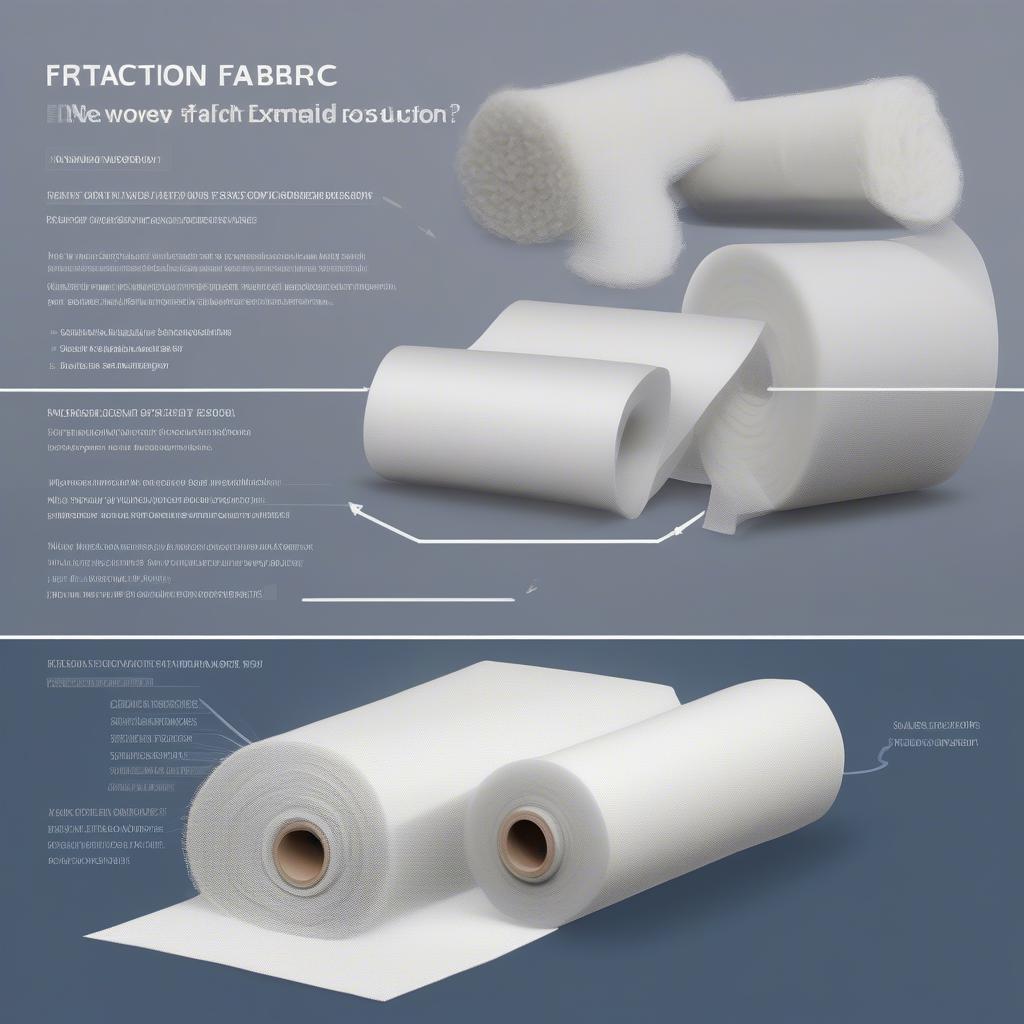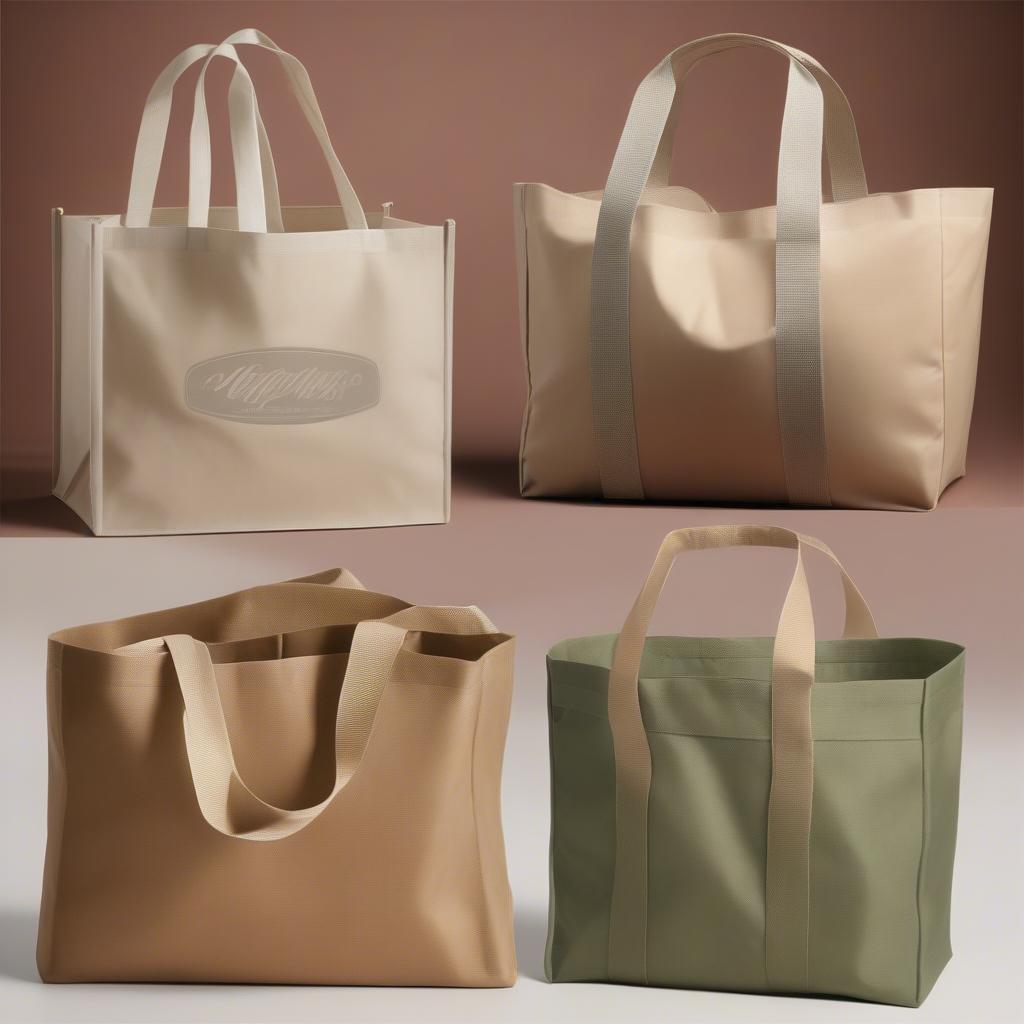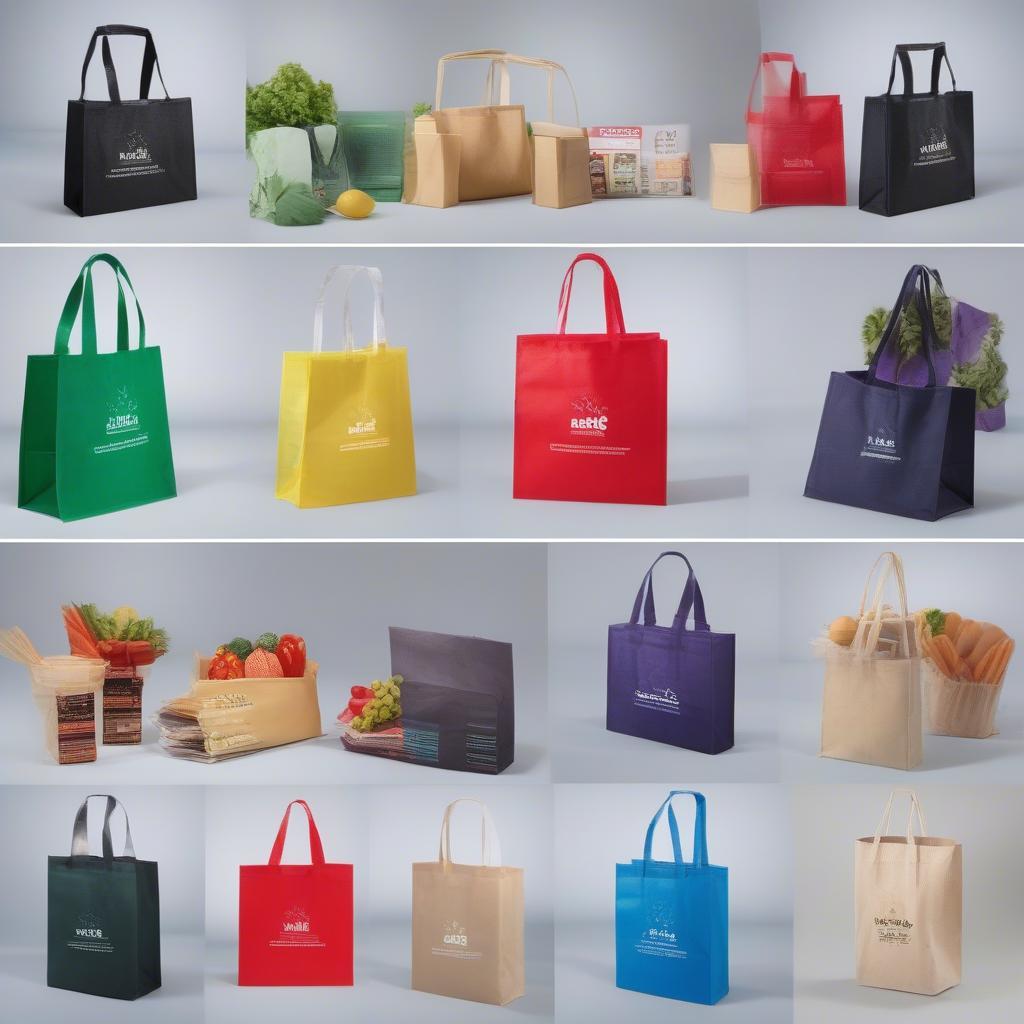Woven Bag
Non Woven Fabric Plastic Bags: A Comprehensive Guide
Non Woven Fabric Plastic Bags have become a ubiquitous part of modern life. From grocery shopping to carrying personal belongings, these versatile bags offer a practical and often eco-friendly alternative to traditional plastic bags. This guide delves into the world of non-woven fabric plastic bags, exploring their materials, manufacturing process, benefits, and various applications. See our guide on non woven bags materials.
Understanding Non-Woven Fabrics
Unlike woven fabrics, which are created by interlacing yarns, non-woven fabrics are made by bonding fibers together through mechanical, thermal, or chemical processes. This creates a fabric-like material that’s durable, lightweight, and cost-effective. Polypropylene (PP) is the most common material used in the production of non-woven fabric plastic bags, offering strength and water resistance. Other materials include polyethylene (PE), polyester, and biodegradable options like PLA (polylactic acid). These materials contribute to the diverse range of non-woven bags available, from simple shopping totes to reusable grocery bags.
What makes non-woven fabric so versatile? Its ability to be easily customized. Non-woven bags can be printed with vibrant designs, logos, and marketing messages, making them effective promotional tools for businesses.
 Non-woven Fabric Production Process
Non-woven Fabric Production Process
Benefits of Non-Woven Fabric Plastic Bags
Non-woven fabric plastic bags offer a multitude of advantages, contributing to their widespread popularity. They are:
- Durable and Tear-Resistant: Non-woven fabrics can withstand considerable weight and stress, making them suitable for carrying a variety of items.
- Lightweight and Easy to Carry: Their lightweight nature makes them convenient for shopping and travel.
- Water-Resistant: Many non-woven bags are water-resistant, protecting contents from spills and rain. Check out our page about pla white non woven bag.
- Reusable and Washable: Unlike single-use plastic bags, many non-woven bags are designed for multiple uses and can be easily washed.
- Cost-Effective: Non-woven bags are relatively inexpensive to produce, making them an affordable option for businesses and consumers alike.
- Customizable: They can be easily printed with custom designs, making them effective marketing tools.
- Eco-Friendly Options Available: Biodegradable non-woven bags made from materials like PLA offer a more sustainable alternative to traditional plastic bags.
“For businesses looking for a cost-effective and impactful way to promote their brand, customized non-woven bags are a fantastic option,” says Sarah Miller, Marketing Director at EcoBag Solutions. “They offer both practicality and visibility, making them a valuable marketing investment.”
Exploring Different Types of Non-Woven Fabric Plastic Bags
Non-woven fabric plastic bags come in various shapes, sizes, and designs to cater to different needs:
- Tote Bags: Popular for shopping and everyday use, these bags often feature long handles and ample storage space. They can be found in various colors and designs.
- Grocery Bags: Designed specifically for grocery shopping, these bags are often reinforced for added strength and durability. Discover more about china non-woven pp tote bag.
- Promotional Bags: Businesses use these bags to distribute promotional materials and increase brand visibility. They are often customized with logos and marketing messages.
- Gift Bags: These bags offer a stylish and eco-friendly alternative to traditional paper gift bags.
- Drawstring Bags: Lightweight and easy to carry, these bags are often used for sports, travel, and storing small items.
 Various Types of Non-woven Bags
Various Types of Non-woven Bags
How are Non Woven Fabric Plastic Bags Made?
The manufacturing process of non-woven fabric plastic bags involves several key steps:
- Fiber Preparation: The raw material, typically polypropylene pellets, is melted and extruded into fibers.
- Web Formation: The fibers are laid out to form a web, the basic structure of the non-woven fabric.
- Bonding: The fibers are bonded together using mechanical, thermal, or chemical processes.
- Cooling and Finishing: The bonded web is cooled and then cut and sewn into bags.
“Understanding the production process of non-woven bags helps businesses make informed choices about the quality and sustainability of their packaging,” adds John Davis, Sustainable Packaging Consultant.
 Applications of Non-woven Bags
Applications of Non-woven Bags
Conclusion
Non woven fabric plastic bags have revolutionized the packaging industry, offering a versatile, cost-effective, and often eco-friendly solution. Their durability, customizability, and reusability make them a preferred choice for businesses and consumers. As technology advances, we can expect further innovations in non-woven fabric technology, leading to even more sustainable and functional non woven fabric plastic bags. Consider switching to non woven tote bag material for a more sustainable option. Learn more about woven bags such as bopp pp woven bag.
FAQ
- Are all non-woven bags reusable?
- What are the eco-friendly options for non-woven bags?
- How can I customize non-woven bags for my business?
- Are non-woven bags recyclable?
- What is the weight capacity of a typical non-woven tote bag?
- How do I clean a non-woven bag?
- What are the different types of bonding used in non-woven fabric production?
Need help with non-woven bags? Contact us at Hanoi, Vietnam or Tech Avenue, Suite 12, San Francisco, CA 94105, USA. We have 24/7 customer support.
